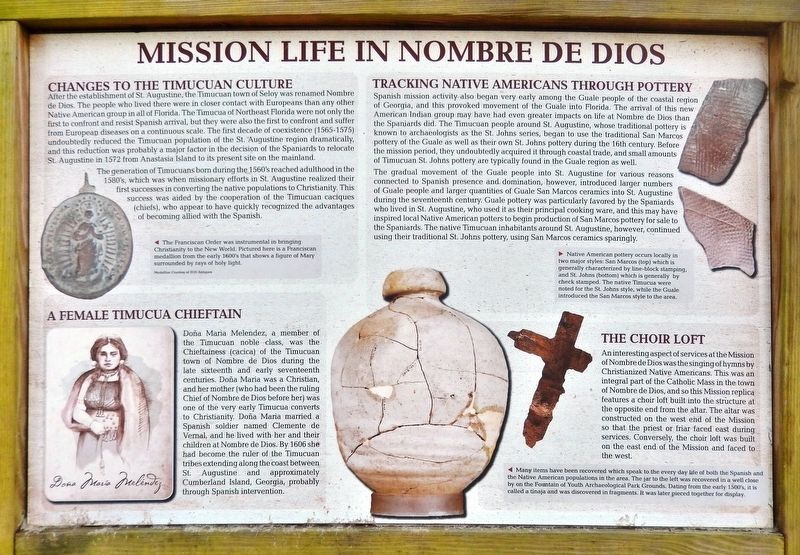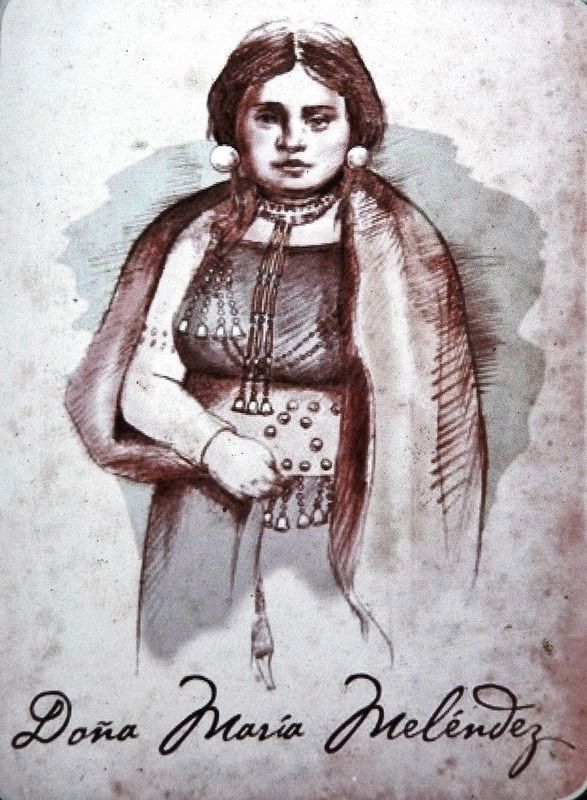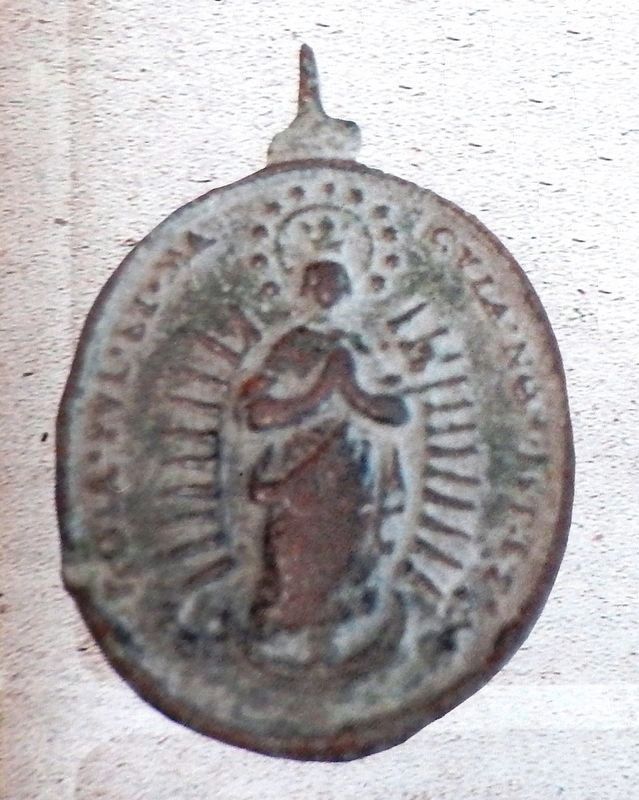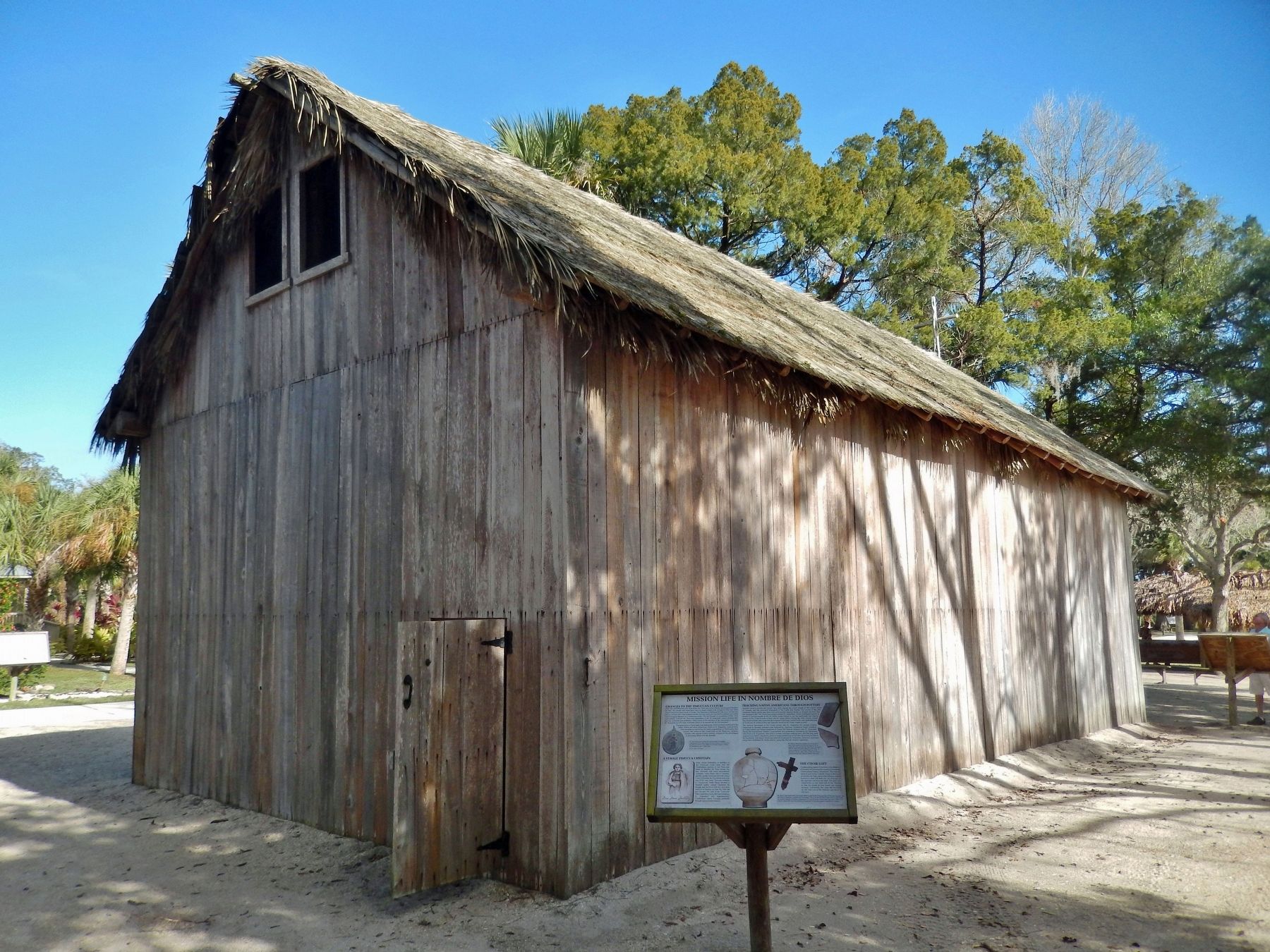Historic District in St. Augustine in St. Johns County, Florida — The American South (South Atlantic)
Mission Life in Nombre de Dios
Changes to the Timucuan Culture
After the establishment of St. Augustine, the Timucuan town of Seloy was renamed Nombre de Dios. The people who lived there were in closer contact with Europeans than any other Native American group in all of Florida. The Timucua of Northeast Florida were not only the first to confront and resist Spanish arrival, but they were also the first to confront and suffer from European diseases on a continuous scale. The first decade of coexistence (1565-1575) undoubtedly reduced the Timucuan population of the St. Augustine region dramatically, and this reduction was probably a major factor in the decision of the Spaniards to relocate St. Augustine in 1572 from Anastasia Island to its present site on the mainland.
The generation of Timucuans born during the 1560's reached adulthood in the 1580's, which was when missionary efforts in St. Augustine realized their first successes in converting the native populations to Christianity. This success was aided by the cooperation of the Timucuan caciques (chiefs), who appear to have quickly recognized the advantages of becoming allied with the Spanish.
A Female Timucua Chieftain
Doņa Maria Melendez, a member of the Timucuan noble class, was the Chieftainess (cacica) of the Timucuan town of Nombre de Dios during the late sixteenth and early seventeenth centuries. Doņa Maria was a Christian, and her mother (who had been the ruling Chief of Nombre de Dios before her) was one of the very early Timucua converts to Christianity. Doņa Maria married a Spanish soldier named Clemente de Vernal, and he lived with her and their children at Nombre de Dios. By 1606 she had become the ruler of the Timucuan tribes extending along the coast between St. Augustine and approximately Cumberland Island, Georgia, probably through Spanish intervention.
Tracking Native Americans through Pottery
Spanish mission activity also began very early among the Guale people of the coastal region of Georgia, and this provoked movement of the Guale into Florida. The arrival of this new American Indian group may have had even greater impacts on life at Nombre de Dios than the Spaniards did. The Timucuan people around St. Augustine, whose traditional pottery is known to archaeologists as the St. Johns series, began to use the traditional San Marcos pottery of the Guale as well as their own St. Johns pottery during the 16th century. Before the mission period, they undoubtedly acquired it through coastal trade, and small amounts of Timucuan St. Johns pottery are typically found in the Guale region as well.
The gradual movement of the Guale people into St. Augustine for various reasons connected to Spanish presence and domination, however, introduced larger numbers of Guale people and larger quantities of Guale San Marcos ceramics into St. Augustine during the seventeenth century. Guale pottery was particularly favored by the Spaniards who lived in St. Augustine, who used it as their principal cooking ware, and this may have inspired local Native American potters to begin production of San Marcos pottery for sale to the Spaniards. The native Timucuan inhabitants around St. Augustine, however, continued using their traditional St. Johns pottery, using San Marcos ceramics sparingly.
The Choir Loft
An interesting aspect of services at the Mission of Nombre de Dios was the singing of hymns by Christianized Native Americans. This was an integral part of the Catholic Mass in the town of Nombre de Dios, and so this Mission replica features a choir loft built into the structure at the opposite end from the altar. The altar was constructed on the west end of the Mission so that the priest or friar faced east during services. Conversely, the choir loft was built on the east end of the Mission and faced to the west.
Topics. This historical marker is listed in these topic lists: Churches & Religion • Colonial Era • Native Americans • Settlements & Settlers. A significant historical year for this entry is 1572.
Location. 29°
54.413′ N, 81° 18.914′ W. Marker is in St. Augustine, Florida, in St. Johns County. It is in the Historic District. Marker can be reached from Williams Street east of Magnolia Avenue. Marker is located along the interpretive trail in Ponce de León's Fountain of Youth Archaeological Park. Touch for map. Marker is at or near this postal address: 11 Magnolia Avenue, Saint Augustine FL 32084, United States of America. Touch for directions.
Other nearby markers. At least 8 other markers are within walking distance of this marker. Life in the Timucuan Village (here, next to this marker); Timucuan Style Dugout Canoe (a few steps from this marker); 1770s British Anchor (a few steps from this marker); The Original Mission Church (a few steps from this marker); The Timucuan Home (a few steps from this marker); Chief Saturiwa (within shouting distance of this marker); Copper Cauldron (within shouting distance of this marker); 4,000 BC (within shouting distance of this marker). Touch for a list and map of all markers in St. Augustine.
Related markers. Click here for a list of markers that are related to this marker. Ponce de León's Fountain of Youth Archaeological Park
Also see . . . The Nombre de Dios Mission Sites.
Efforts to convert the Timucua to Christianity began in the vicinity of the former Spanish settlement after 1577, when the first Franciscan friars arrived in Florida. A number of Timucua were baptized,(Submitted on December 26, 2021, by Cosmos Mariner of Cape Canaveral, Florida.)including the Cacica (Chieftainess) of the town of Nombre de Dios, the name given to the Native American town just north of the Spanish city. These first Christian Indians attended Mass in the town of St. Augustine until after 1587, when the first Franciscan mission doctrina, was established at the Nombre de Dios, and was given the same name. Franciscan friar Antonio de Escobedo was assigned there, and helped build the first Nombre de Dios mission church.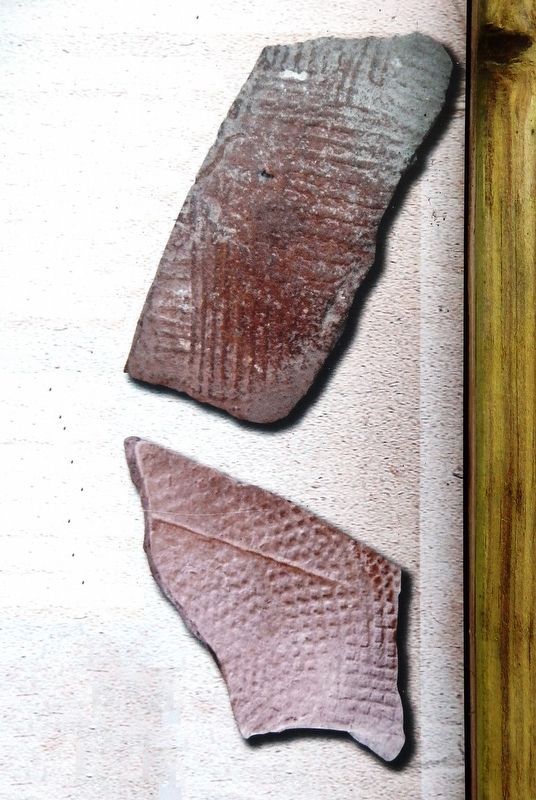 4. Marker detail: Native American PotteryNative American pottery occurs locally in two major styles: San Marcos (top) which is generally characterized by line-block stamping, and St. Johns (bottom) which is generally check stamped. The native Timucua were noted for the St. Johns style, while the Guale introduced the San Marcos style to the area.
4. Marker detail: Native American PotteryNative American pottery occurs locally in two major styles: San Marcos (top) which is generally characterized by line-block stamping, and St. Johns (bottom) which is generally check stamped. The native Timucua were noted for the St. Johns style, while the Guale introduced the San Marcos style to the area.
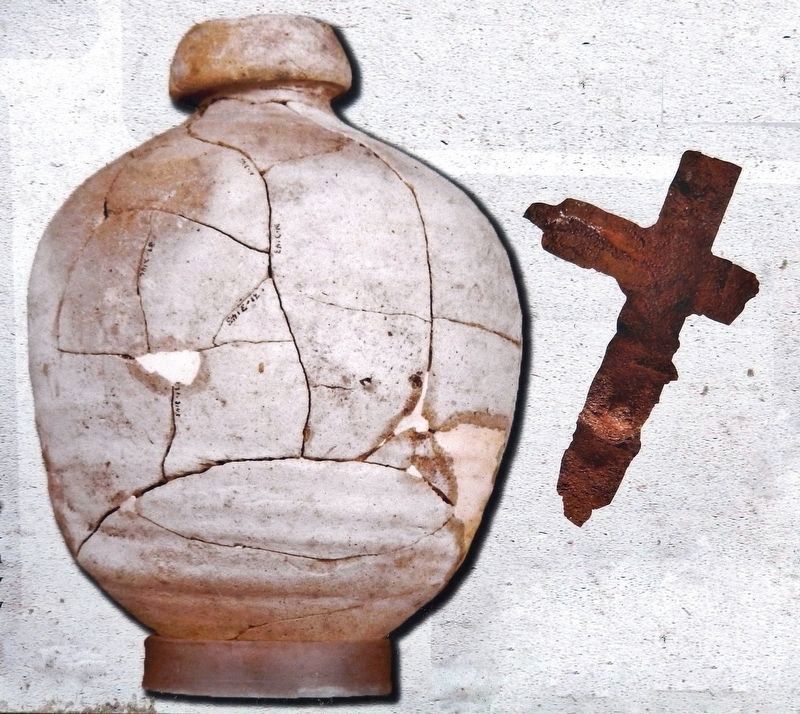
5. Marker detail: Artifacts
Many items have been recovered which speak to the everyday life of both the Spanish and the Native American populations in the area. This jar was recovered in a well close by on the Fountain of Youth Archaeological Park Grounds. Dating from the early 1500's, it is called a tinaja and was discovered in fragments. It was later pieced together for display.
Credits. This page was last revised on December 29, 2021. It was originally submitted on December 24, 2021, by Cosmos Mariner of Cape Canaveral, Florida. This page has been viewed 299 times since then and 44 times this year. Photos: 1, 2, 3, 4, 5, 6. submitted on December 25, 2021, by Cosmos Mariner of Cape Canaveral, Florida.
